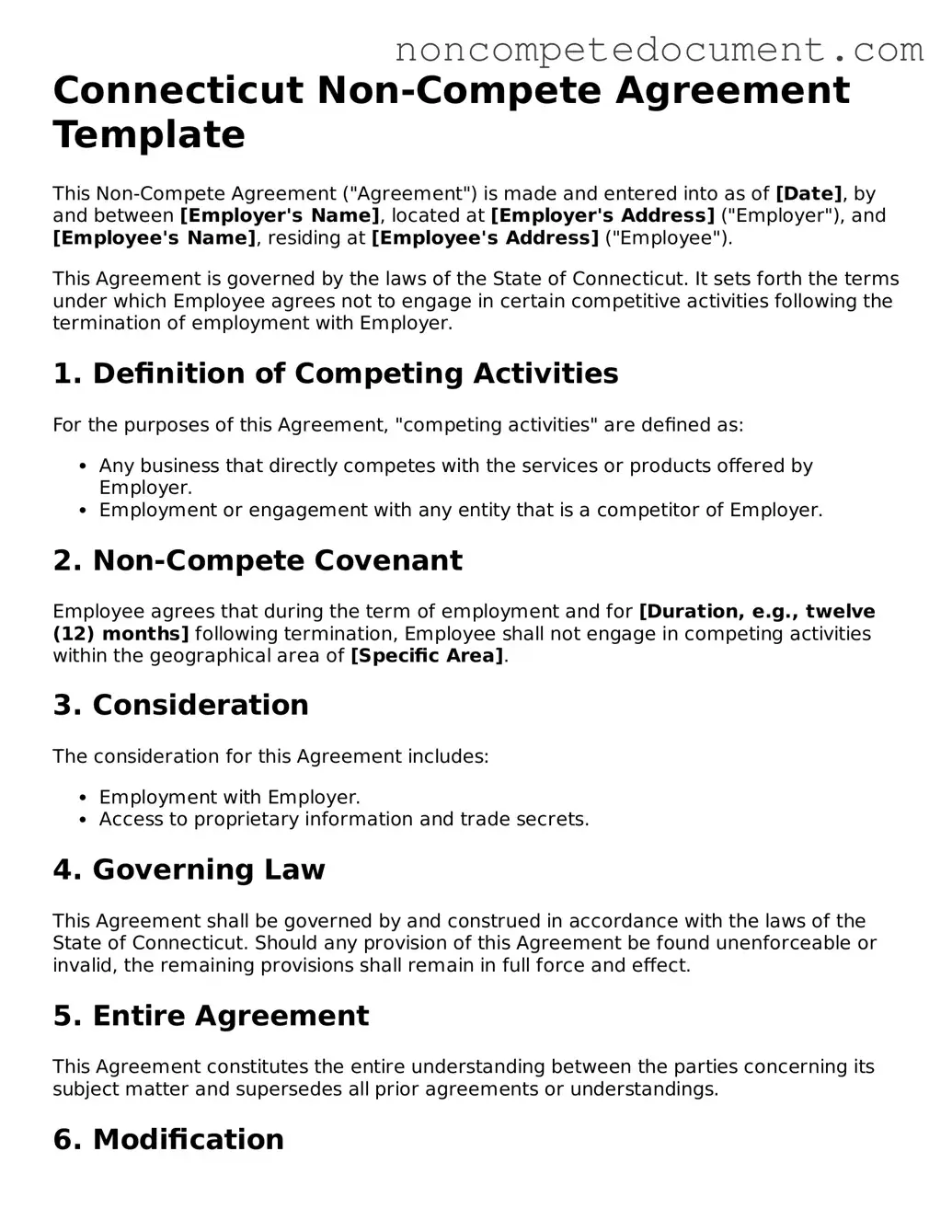Fillable Connecticut Non-compete Agreement Template
A Connecticut Non-compete Agreement is a legal document that restricts an employee's ability to work for competitors or start a competing business after leaving their current employer. Such agreements aim to protect the employer's business interests, trade secrets, and client relationships. Understanding the implications and requirements of this form is essential for both employers and employees navigating the employment landscape in Connecticut.
Get My Document
